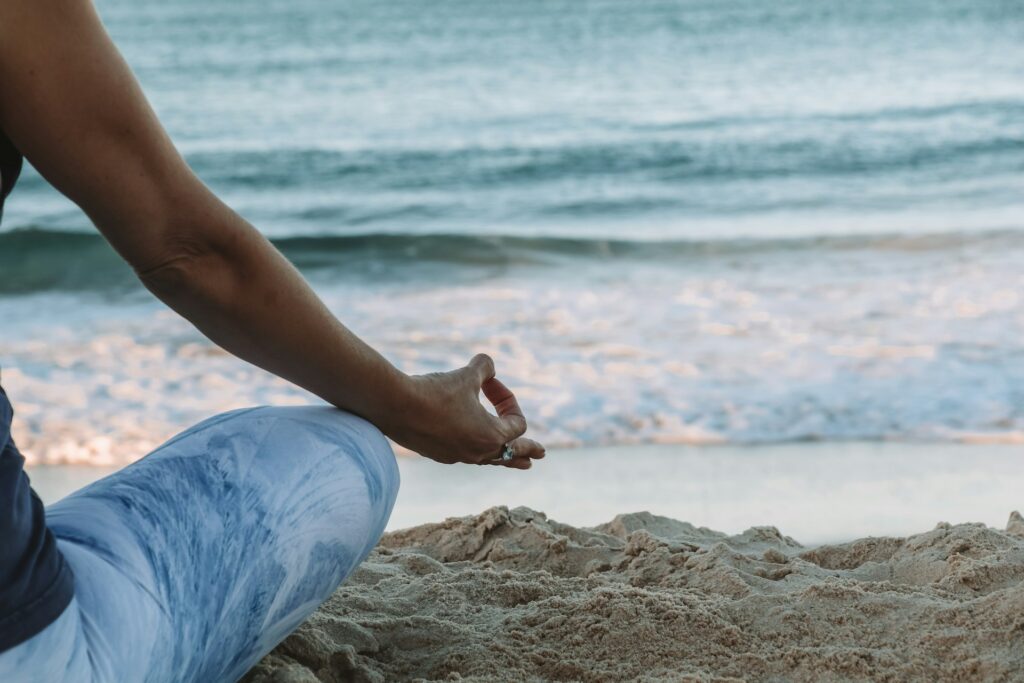The honest truth about finding your own path to peace when sitting still just isn’t your thing
Let me be straight with you: I’ve tried meditation. Multiple times. Downloaded the apps, found the quiet corner, assumed the position, and… nothing. Well, not nothing—mostly just my brain running laps around my to-do list while I sat there feeling like I was failing at something that’s supposed to be relaxing.
The Real Talk About Meditation and Men
Here’s what nobody talks about: meditation isn’t one-size-fits-all, especially for guys who are used to being active, solving problems, or keeping their hands busy. The whole “sit still and clear your mind” approach can feel counterintuitive when your natural stress response is to do something about it.
I spent years thinking I was somehow broken because I couldn’t make meditation work for me. Turns out, I wasn’t broken—I was just looking for calm in the wrong places.
My Personal Calm-Down Toolkit
After plenty of trial and error (and some honest conversations with other guys who felt the same way), I discovered that finding calm isn’t about forcing yourself into someone else’s mold. It’s about finding what actually works for you. Here’s what I’ve learned works for me and might work for you too:
The Garage Sanctuary
There’s something almost magical about working with your hands. Whether it’s tinkering under the hood of my car, building something in the workshop, or even just organizing tools, the combination of physical activity and focused attention creates this incredible sense of calm. It’s like meditation, but with actual results you can see.
The key is the focus it requires. When I’m troubleshooting a carburetor or measuring twice before cutting once, my mind can’t wander to work stress or relationship issues. It’s forced to be present, which is exactly what meditation is supposed to do—it just happens to come with the bonus of fixing something or creating something useful.
The Moving Meditation
Forget sitting still. Some of us find our calm while moving. For me, it’s long walks without a destination in mind, or hitting the trails for a hike where the only goal is to see what’s around the next bend. There’s something about the rhythm of walking that settles my mind in a way that sitting never could.
The research backs this up too. Getting back to nature helps ease tension, calm thoughts, and recenter your soul. It’s not just hippie nonsense—there’s real science behind why spending time outdoors and moving your body can be as effective as traditional meditation for stress relief.
The Focus Projects
Video games get a bad rap, but hear me out. Not the rage-inducing competitive stuff, but games that require strategy, problem-solving, or creative thinking. Building cities, solving puzzles, or exploring virtual worlds can create that same focused, present-moment awareness that meditation aims for.
Video games are another helpful hobby for stress relief, and I’ve found that certain types of games can actually help me process stress and emotions in a way that sitting quietly never did. The key is choosing games that engage your mind without ramping up your adrenaline.
The Cooking Connection
This one surprised me. I never considered myself a “cook,” but I started experimenting with more involved recipes during the pandemic, and something clicked. If your job is highly analytical (e.g., a physician or engineer), choose a hobby that lets you use different skills—like cooking, knitting, or painting.
Cooking forces you to be present—you can’t let your mind wander when you’re managing multiple pans and timing everything perfectly. Plus, unlike meditation, you get to eat the results. The combination of creativity, technique, and immediate feedback creates this perfect storm of focused attention that leaves me feeling more centered than any breathing exercise ever has.
The Reading Retreat
Not every calm-down method needs to be active. Sometimes, getting lost in a good book provides the mental escape that traditional meditation promises but doesn’t always deliver. Picking up a new book also helps you fall asleep faster!
The trick is choosing the right kind of book for the moment. Fiction that transports you somewhere else, biographies that give you perspective, or even technical books about subjects you’re genuinely curious about. The key is engagement—your mind needs something to chew on that isn’t your daily stress.
Why This Approach Actually Works
What all these alternatives have in common is that they provide what psychologists call “active coping”—they engage your mind and often your body in productive ways rather than asking you to simply sit with your thoughts. For many men, this feels more natural and sustainable than traditional meditation practices.
They also provide what meditation is really trying to give you: presence, focus, and a break from the mental noise. The difference is that these methods work with your natural tendencies rather than against them.
Finding Your Own Path
The point isn’t that these specific activities will work for everyone. The point is that calm looks different for different people, and that’s perfectly normal. Maybe your version involves music, sports, gardening, or something completely different. The key is paying attention to when you naturally feel most centered and peaceful, then intentionally creating more opportunities for those moments.
Hobbies help you focus on the present moment and not worry about tomorrow. Hobbies also push you to take a break and unwind while being productive. This productivity aspect is crucial for many guys—we like to feel like we’re accomplishing something, even during our downtime.
The Simple Truth
There’s no wrong way to find calm, and there’s no shame in admitting that the most popular methods don’t work for you. In fact, recognizing what doesn’t work is just as valuable as discovering what does. It means you’re paying attention to your actual needs rather than trying to force yourself into someone else’s idea of wellness.
Your calm might look like mine, or it might look completely different. It might involve power tools or paintbrushes, hiking boots or house slippers, fast cars or slow books. What matters is that it works for you, consistently, and leaves you feeling more centered and less stressed.
The best stress-relief method is the one you’ll actually use. So stop forcing yourself to meditate if it feels like torture, and start paying attention to what actually makes you feel calm. Your future self will thank you for it.

This article is for informational and lifestyle purposes only and should not be considered professional medical or mental health advice. The approaches discussed are based on personal experience and research about stress management techniques. If you’re experiencing persistent stress, anxiety, or other mental health concerns, please consult with a qualified healthcare professional. Always speak with your doctor before making significant changes to your wellness routine. The information provided here is not intended to diagnose, prevent, or cure any condition.
Sources:
- SF Stress & Anxiety Center. (2024). “11 Hobbies That Can Help Reduce Stress and Anxiety.”
- Wander Healthy. (2023). “55 Relaxing Hobbies to Restore Your Energy.”
- Kentucky Counseling Center. (2021). “15 Stress-Relieving Hobbies You Should Try Now.”
- With Love and Fluffs. (2025). “25 Stress Relieving Hobbies for More Calm and Relaxed Vibes.”



